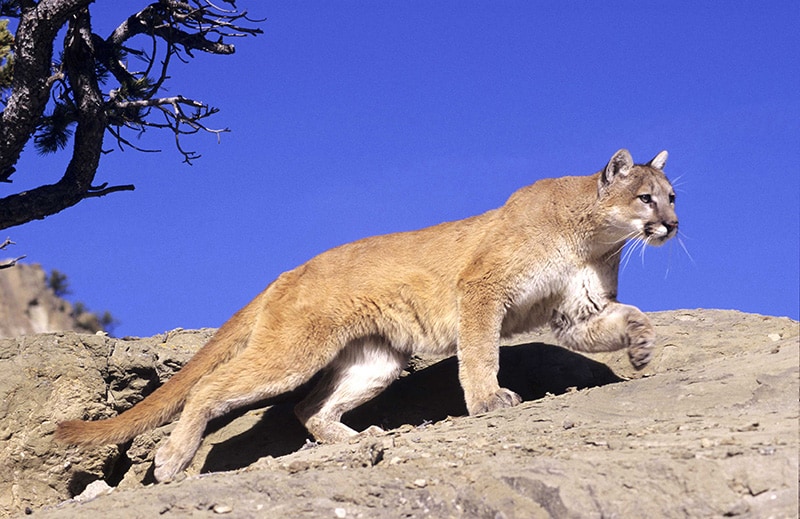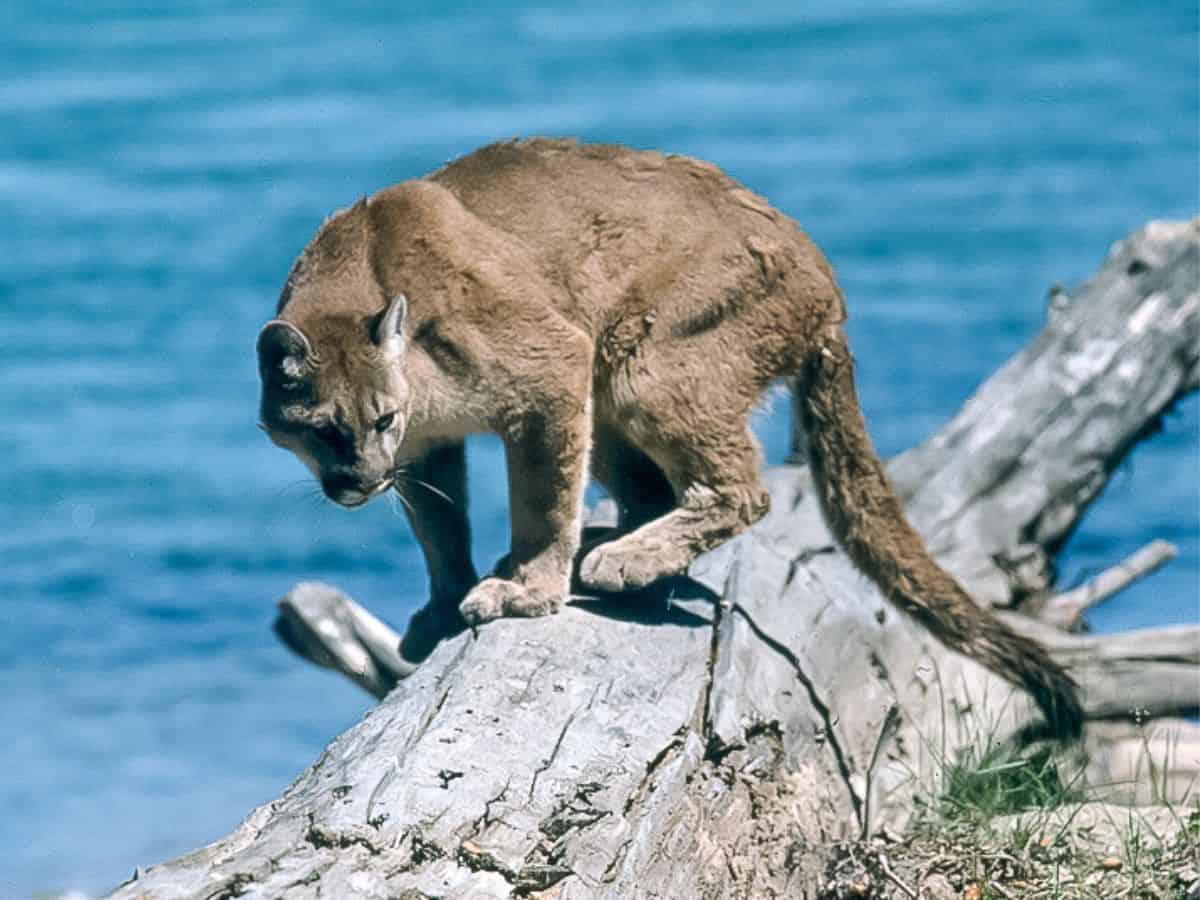Cougars (Puma concolor), also commonly known as mountain lions or pumas, are large predatory cats that are native to North and South America, ranging from Canadian Yukon to the southern Andes in South America.
In Florida these wild cats are known as the Florida panther (Puma concolor coryi). A fun fact is that cougars are the largest wild cats that meow.
Cougars are generally solitary animals that are adapted to living in a variety of different environments, including forests, mountains, and deserts.
Why do cougars swim?
While cougars are not typically associated with swimming, they are capable of swimming when necessary.
This ability can be important for their survival in the wild, particularly when it comes to crossing rivers or other bodies of water. Rivers can be major barriers to cougars, and crossing them can be a risky and potentially dangerous endeavor. However, if a cougar needs to cross a river or swim to an island to access food or territory on the other side, it will do so.

Cougars may also use swimming as a way to escape danger. If a cougar is being pursued by a predator or is in danger of being trapped, it may attempt to swim to safety. While swimming is not a preferred method of escape for cougars, it is a useful skill to have in their repertoire.
What the research says about swimming cougars
While researchers don’t know a lot about the swimming capabilities of mountain lions, there is some anecdotal research that has been published.

One of the earliest recordings in California about mountain lions swimming was noted by Jay C. Bruce, a mountain lion hunter employed by the National Park Service in the early part of the 20th century. Bruce wrote a field note about his observations of a mountain lion swimming across a river in Shasta County that was published in 1921 in California Fish and Game.
It seems to be the general belief that the mountain lion is very shy of water, and that he will go out of his way in order to avoid crossing a stream when it is necessary for him to swim. My experience in trailing lions does not bear out this impression. In fact, two male lions which I killed at different times in Shasta County were voluntarily swimming at the McCould River, at different places, on every trip around their beat. Deer were as numerous on one side of the river as on the other, so it was not necessary for the lions to cross in order to get food. And as in each sentences, the tracks were several hours old, it is apparent that these lions did not swim the river to confuse or avoid the dogs, nut that they were merely following their natural instinct.
The most recent research, published in 2022 in Northwestern Naturalist, looked at the aquatic efforts of a male cougar that was observed swimming 1.1 kilometers between the Olympic Peninsula to Squaxin Island in Puget Sound, Washington. Other observations noted cougars swimming up to a distance of 2 kilometers to reach islands.

The researchers used these distance to extrapolate how many of the 6,153 islands in the Salish Sea could theoretically be reached by swimming cougars. The authors of the study concluded that, in theory, cougars could reach between 3,808 to 4,583 islands.
In 2010, researchers outfitted a puma in Patagonia with a GPS tracker. After tracking the puma for ten months, the researchers discovered that the puma would make night time trips to Isla Victor which sits in the middle of Lago Cochrane in southern Chile.
While on the island, the puma was able to capture and consume livestock at night before swimming back to the mainland. Researchers calculated that the puma would 549 to 1,087 meters each way and never stayed on Isla Victor during the day.
Understanding where cougars can swim is important for conservation efforts
With habitat fragmentation an increasing detriment to cougar survival, researchers have concluded that the aquatic movement of cougars can potentially serve as an important linkage in calculating habitat connectivity.
Cougars are considered an umbrella species which means that conservation efforts that increase habitat for mountain lions has a ripple effect that benefits a wide range of other species. If cougars can swim across rivers and across ocean waters to islands, this expands the reach of their potential habitat and reduces the barrier effect that these waterways present to mountain lion movement.
References
Bruce, J. C. (1921). Mountain lion swims river. California Fish and Game 7(3):180-181.
Mark Elbroch, L., Saucedo, C., & Wittmer, H. U. (2010). Swimming by pumas (Puma concolor) in Patagonia: rethinking barriers to puma movement. Studies on Neotropical Fauna and Environment, 45(3), 187-190. https://dx.doi.org/10.1080/01650521.2010.532410
Melling T. (2018). Cougar swimming caught on camera. Discover Vancouver Island Blog. https://www.discovervancouverisland.com/blog/Cougar-swimming-story.
Stratton, A., Barbee, R., Sager-Fradkin, K., Ackerman, B. T., & Elbroch, L. M. (2022). Island Hopping Cougars (Puma Concolor) in the Salish Sea. Northwestern Naturalist, 103(3), 236-243. https://doi.org/10.1898/1051-1733-103.3.236






